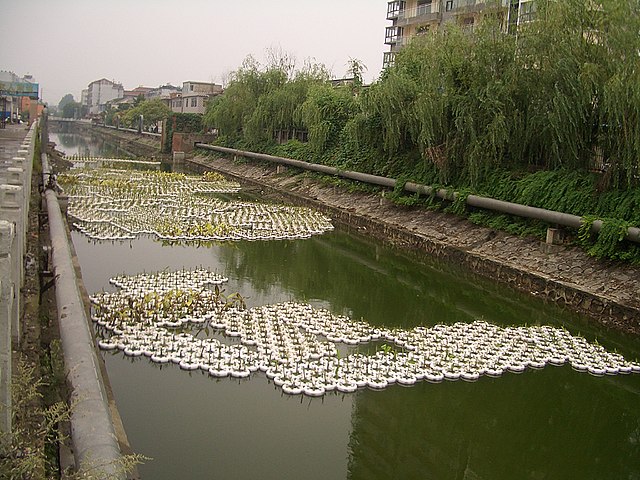Aquaponics is a food production system that couples aquaculture with hydroponics whereby the nutrient-rich aquaculture water is fed to hydroponically grown plants.
A small, portable aquaponics system. The term aquaponics is A portmanteau of the terms aquaculture and hydroponic agriculture.
Aquaponic greenhouse in Apaga
Diagram of the University of the Virgin Islands commercial aquaponics system designed to yield 5 metric tons of Tilapia per year.
A commercial aquaponics system. An electric pump moves nutrient-rich water from the fish tank through a solids filter to remove particles the plants above cannot absorb. The water then provides nutrients for the plants and is cleansed before returning to the fish tank below.
Aquaculture, also known as aquafarming, is the controlled cultivation ("farming") of aquatic organisms such as fish, crustaceans, mollusks, algae and other organisms of value such as aquatic plants. Aquaculture involves cultivating freshwater, brackish water and saltwater populations under controlled or semi-natural conditions, and can be contrasted with commercial fishing, which is the harvesting of wild fish. Aquaculture is also a practice used for restoring and rehabilitating marine and freshwater ecosystems. Mariculture, commonly known as marine farming, is aquaculture in seawater habitats and lagoons, as opposed to freshwater aquaculture. Pisciculture is a type of aquaculture that consists of fish farming to obtain fish products as food.
Aquaculture fish farming in the fjords south of Castro, Chile
Cultivating emergent aquatic plants in floating containers
Underwater Eucheuma farming in the Philippines
A seaweed farmer in Nusa Lembongan (Indonesia) gathers edible seaweed that has grown on a rope.








